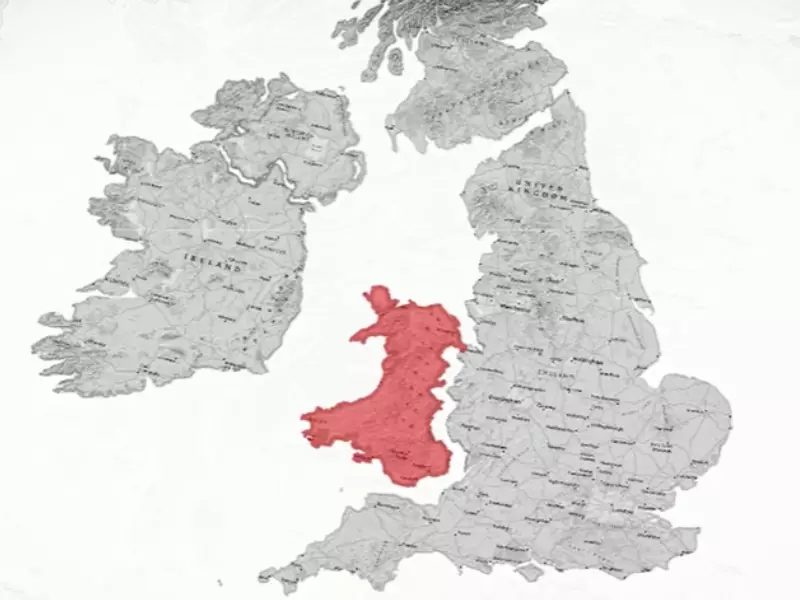The intertwined narratives of England and Scotland, two nations sharing the same island, have crafted a complex relationship rich in history, culture, and politics. From ancient rivalries to union, their story is a tapestry of cooperation, conflict, and a shared destiny. The evolution of this relationship reflects broader themes of identity, sovereignty, and communal growth that resonate far beyond their borders.
The relationship between England and Scotland is defined by the 1707 Act of Union, which merged the two countries into the United Kingdom, marking a significant moment in their shared history. Despite this union, Scotland has retained a distinct cultural identity, legal system, and educational framework, highlighting a partnership characterized by unity and diversity.
This dynamic interplay extends to various spheres, including economy, governance, and social policies, where both nations navigate shared challenges and opportunities. The recent debates over Scottish independence and the implications of devolution underscore the ongoing conversation about what it means to be part of the United Kingdom in the 21st century. This article aims to explore the multifaceted nature of the England-Scotland relationship, shedding light on its historical roots, cultural significance, and political complexities.

Historical Context
Early History
The tapestry of England and Scotland’s relationship stretches back to ancient times, long before the concept of modern nation-states. Initial interactions were marked by Roman Britain’s attempts to conquer Scottish territories. The Romans’ northernmost frontier, marked by Hadrian’s Wall, delineated the boundary of their empire, signifying the beginning of a divided landscape. In the early medieval period, the emergence of distinct kingdoms in Scotland and England laid the groundwork for centuries of rivalry and cooperation.
Acts of Union
The 1707 Act of Union was a landmark moment, uniting the parliaments of Scotland and England into a single entity, the Parliament of Great Britain. This union was driven by political, economic, and security reasons, including Scotland’s failed colony attempt in Panama, which devastated its economy. The promise of economic support and equal trading opportunities with England and its colonies was a significant lure. The Act’s impact was profound, laying the foundation for the United Kingdom and reshaping the political landscape of the British Isles.
Recent Developments
The late 20th and early 21st centuries have seen significant changes in the governance of Scotland. The 1999 establishment of the Scottish Parliament reintroduced a distinct legislative body to Scotland, granting it autonomy over various domestic affairs, including education, health, and housing. This move, known as devolution, marked a significant shift towards greater Scottish self-determination. Recent referendums, particularly the 2014 Scottish independence referendum, have further highlighted the evolving dynamics of the relationship, reflecting ongoing debates about sovereignty, national identity, and the future of the union.
Cultural Ties
Language and Literature
The linguistic landscape of England and Scotland is rich and varied, with English serving as the lingua franca while Scots and Gaelic retain strong presences in Scotland. This diversity reflects a broader cultural narrative of shared and distinct identities. In literature, Scotland’s contribution is significant, with figures like Robert Burns, Sir Walter Scott, and more recently, J.K. Rowling, shaping not only Scottish but global literary heritage. This interweaving of voices has created a robust literary tradition that highlights the complexities and nuances of the Anglo-Scottish relationship.
Traditions and Celebrations
Cultural festivities and holidays offer a vivid window into the shared and unique aspects of English and Scottish life. Burns Night in Scotland and St George’s Day in England exemplify how national figures are celebrated, reflecting a blend of shared heritage and distinct national identities. Seasonal celebrations like Christmas and New Year’s (Hogmanay in Scotland) further illustrate how traditions have been adapted and embraced, fostering a sense of community and belonging across the border.
Sporting Rivalries
Nowhere is the friendly rivalry between England and Scotland more apparent than in sports, particularly football and rugby. Matches between the two nations often evoke a heightened sense of national pride, tracing back to the first international football match in 1872. These contests, while competitive, underscore a deeper unity, celebrating shared passions and a mutual respect that transcends the pitch.
Political Dynamics
Governance and Autonomy
The political structures of England and Scotland are characterized by a blend of shared governance and distinct autonomy. The Scottish Parliament in Edinburgh represents a significant step towards self-determination, managing a range of domestic affairs separate from the UK Parliament in London. This system of devolved powers highlights a pragmatic approach to unity and diversity, allowing Scotland to address its unique needs while remaining part of the broader UK political framework.
Economic Relations
The economic interdependence between England and Scotland is a cornerstone of their relationship. Trade, investment, and shared resources underpin much of this connection, with both economies benefiting from access to larger markets and shared infrastructure. The North Sea oil and gas reserves have been particularly significant, contributing to debates about economic viability and independence. Fiscal policies and funding arrangements, such as the Barnett Formula, also play a crucial role in balancing economic disparities and ensuring equitable investment across the UK.
Social Policies
Comparing social policy approaches reveals both convergence and divergence in how England and Scotland address issues like healthcare, education, and social welfare. Scotland’s decision to maintain a free university education for its residents, in contrast to England’s tuition fee system, exemplifies the autonomous policy-making devolution allows. Healthcare systems, while based on the NHS model, also show differences in administration and priorities, reflecting a commitment to tailoring social policies to meet the specific needs of their populations.

Shared Challenges and Cooperation
Environmental Initiatives
England and Scotland have recognized the urgent need to address climate change and environmental degradation as shared challenges requiring collaborative solutions. Both have committed to ambitious targets to reduce carbon emissions, aiming to become net-zero societies by 2050. Joint efforts include investment in renewable energy sources, such as wind, solar, and tidal power, where Scotland, in particular, has significant natural advantages. Conservation projects also see cooperation, with initiatives aimed at protecting the natural landscapes and biodiversity that define the British Isles. This collective approach not only addresses global environmental concerns but also strengthens the bond between these nations by highlighting their mutual dependence and shared responsibilities.
Security and Defense
The security and defense partnership between England and Scotland is an integral component of their relationship, encapsulating the essence of their union. Operating under the umbrella of the United Kingdom’s defense policy, both countries contribute to and benefit from shared military and intelligence resources. This includes joint operations, shared defense infrastructure, and collaborative efforts in counter-terrorism. The UK’s nuclear deterrent, based in Scotland, exemplifies the complex interdependencies in defense matters, illustrating both shared strategic interests and points of contention within the broader political discourse.
Health and Pandemic Response
The COVID-19 pandemic underscored the importance of collaboration in managing health crises, while also highlighting differences in approach between England and Scotland. Both governments worked closely in the initial stages, sharing data and resources. However, Scotland often implemented its public health measures, sometimes diverging from England’s strategies, to address the pandemic’s challenges within its context. This autonomy in health policy, enabled by devolution, allowed for tailored responses to the crisis, demonstrating a balance between unified action and respecting each nation’s right to manage its public health affairs.
Future Prospects
Independence Debates
The debate over Scottish independence remains a pivotal issue, influencing the future trajectory of England and Scotland’s relationship. The 2014 referendum, which resulted in Scotland choosing to remain part of the UK, did not settle the question, with subsequent elections indicating sustained support for the Scottish National Party (SNP) and the independence agenda. Factors influencing the debate include economic considerations, political representation, and national identity. The prospect of another referendum and its potential outcomes continue to fuel discussions on the nature of the union and the path forward for both nations.
Economic Strategies
Looking ahead, economic strategies will play a crucial role in shaping the relationship between England and Scotland. Key areas of focus include fostering innovation, addressing regional disparities, and enhancing competitiveness in a global economy. Collaboration in sectors such as technology, finance, and green energy could drive economic growth and job creation, benefitting both countries. However, navigating economic challenges, such as post-Brexit trade arrangements and fiscal policies, will require careful coordination and a shared vision for the future of the UK economy.
Cultural Exchange and Preservation
Cultural exchange and preservation efforts are vital in maintaining and enriching the shared cultural heritage of England and Scotland while respecting their distinct identities. Initiatives include support for the arts, joint historical commemorations, and promoting cultural tourism across the UK. These efforts not only celebrate the rich tapestry of British culture but also serve as a reminder of the interconnectedness of England and Scotland’s histories and futures. Respecting and preserving cultural distinctiveness, while fostering a sense of unity, is key to a harmonious and prosperous relationship moving forward.
Frequently Asked Questions
What led to the Act of Union in 1707?
The Act of Union in 1707 was largely influenced by economic considerations, political necessity, and the desire for a stronger defense mechanism against common threats. Both England and Scotland sought to benefit from a unified market and enhanced security, leading to a negotiated agreement that resulted in their merger.
How do England and Scotland handle their governance?
England and Scotland share the UK Parliament for national matters, but Scotland has its own Parliament in Edinburgh for local issues, including health, education, and transportation. This devolution of powers allows Scotland to address its specific needs within the framework of the United Kingdom.
Are there movements for Scottish independence?
Yes, there are active movements for Scottish independence, advocating for Scotland to become a separate sovereign nation again. The debate gained significant momentum following the 2014 referendum, in which Scottish independence was narrowly rejected, and continues to be a pivotal issue in Scottish politics.
How do cultural differences between England and Scotland manifest?
Cultural differences between England and Scotland manifest in various ways, including linguistic diversity, traditional celebrations, and distinct legal and educational systems. These differences are celebrated and respected, contributing to the rich tapestry of the United Kingdom’s cultural heritage.
Conclusion
The relationship between England and Scotland is emblematic of how historical ties, cultural identity, and political aspirations can coexist within a union. It serves as a testament to the strength found in diversity and the potential for unity to foster mutual growth and resilience. As they move forward, the continued dialogue between England and Scotland will undoubtedly shape the future of both nations, reflecting their shared history and individual aspirations.
The evolving narrative of England and Scotland’s relationship underscores the importance of understanding and appreciating the nuances that define our connections to one another. As we look to the future, the lessons learned from their union, challenges, and collaborations offer valuable insights for navigating the complexities of identity, sovereignty, and community in our increasingly interconnected world.
